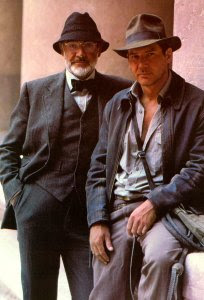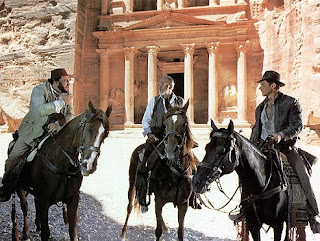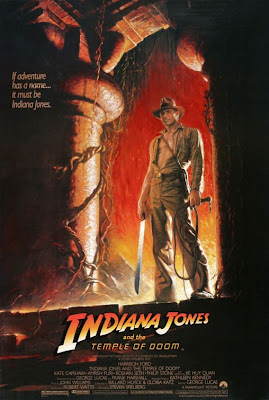Kicking off the
summer movie season, director Jon Favreau (
Elf, Made, Swingers) did for Iron Man what Chris Nolan did for Batman: gave audiences a great representation of the character and immersed us in the world of the hero in a unique way. While claims that it's the "best comic book movie of all time" are far fetched, I definitely enjoyed the movie and thought it had a great combination of action, story, and humor.
Iron Man
Director: Jon Favreau
Starring: Robert Downey, Jr., Gwyneth Paltrow, Jeff Bridges, Terrence Howard


RD Jr. was, as I've said before, perfectly cast in this role. The dude practically IS Tony Stark in real life. The character, a rapid-fire billionaire playboy with loads of confidence and intense technological knowledge, is one of those cats that women want and guys want to be. Downey pulled off the humor and sarcasm without a hitch, dropping pick-up lines to reporters without blinking an eye. Terrence Howard was a solid sidekick as James Rhodes, the military tech advisor and Stark's best friend. I'm looking forward to watching his character (hopefully) evolve into a more prominent role (
War Machine) in
Iron Man 2, due out in 2010.

Gwyneth Paltrow, who I normally don't really care for, was an excellent Pepper Potts, the adorable love interest/secretary to Stark. Most comic book movies tend to get a little , but the writers of
Iron Man (there were four of them!) should be rewarded for keeping the romance light and allowing Stark and Potts to get a little banter going instead of weighing the film down with heavy love. It's just not that type of movie, and they embraced that and used it to their advantage. Jeff Bridges as the ridiculously-named Obadiah Stane was really reminiscent of William Hurt. It's crazy how much they look and sound alike in this movie and in the upcoming Hulk adaptation in which Hurt plays General "Thunderbolt" Ross. I thought Stane was a passable villain; he was greedy and everything, but he just wasn't crazy enough for my tastes. I like my villains insane and powerful so they can actually do some damage (uh!) to the hero.
Favreau's direction was one of the most surprisingly enjoyable things about this film. The guy's never had this kind of budget at his disposal before, but he made great use of it and churned out a high quality product as a result. The shot selection was good; they had all the requisite shots a comic book movie needs (I thought that Michael Bay-esque one where Iron Man shoots the tank and walks toward the camera as it explodes was pretty cool), and they didn't seem forced just for the sake of getting those shots. The normally-funny Favreau (he's an actor too, in case you didn't know) played Tony Stark's driver, a straight faced no-nonsense guy, physically showing us that he's grown up from his goofing-off days with Vince Vaughn and that he has the ability to be taken seriously in the business. Using the capture of Stark as the motivation for the character shift, the director didn't dwell too long on the "origin" of the character (a pitfall of most comic book movies). Instead, he made that section relatively short and allowed Tony Stark to struggle with the consequences of his naivety for the rest of the film. He gave the movie a nice tone that was consistent throughout and got some memorable performances out of his actors. And how can you go wrong starting the movie with AC/DC's "Back in Black?"
(Spoilers Ahead!)

The action scenes were great; although there were only two really sweet scenes where Iron Man does some damage (in the Afghan desert and the final battle with Obidiah Stane), they were smoothly filmed and even better edited. The flying scenes looked flawless and the graphics were incredible, reminding me a lot of a personal favorite: 1991's
The Rocketeer. Iron Man's costume was definitely the coolest-looking superhero costume created for a movie so far. I did find a couple logistical things the filmmakers should have taken into account in the final battle:
1. Stark's glove comes off his hand and he blocks bullets with his forearm while haphazardly shielding his face and he doesn't get hit with anything. (I know it's a superhero movie, but come on.)
2. In the final explosion that looks like a freakin' nuclear bomb going off, Tony Stark's face is RIGHT NEXT TO the gaping hole that all the fire shoots up through. All he does to avoid it is roll his head over away from the flames, and when they cut back to him after the fire has subsided, Tony's fine. Not even singed. They had to cut to a wide shot from about 300 yards away to impart to the audience the enormity of the explosion, but yet Stark is three feet from the fire and he's fine? That kind of heat should have cooked him alive in that suit. But I'll grant you that maybe he installed some sort of heat-resistant technology since he did account for the icing that occurs when he goes into the atmosphere. Still, that's no excuse for why his exposed head wasn't burnt to a crisp, or at least all of his hair burned off.
The technology, as Branz mentioned to me, looked a little out of our league as far as being able to create matrices that allow someone to alter holographic images at whim. At least in
Minority Report, wore special gloves and wiped the images across a hard surface. Stark was just going at it in the middle of his work room, manipulating the image out of thin air. Sure it was cool and sure it's a comic book movie, but I'm just saying - I don't know if we have that technology yet. Either way, it doesn't bother me because Tony Stark is supposed to be incredibly gifted when it comes to all things technological. I don't doubt he could come up with something like that even if our real-world engineers haven't been able to yet.
Aside from the obvious parallels to Batman (billionaire playboys, getting suited up to fight injustice, using gadgets at their disposal, corporations initially having good intentions but end up screwing over the world, etc.), I found some other similarities to another superhero movie that doesn't have such a positive connotation: Ang Lee's oft-maligned
Hulk from 2003. Both
Iron Man and
Hulk (not to be confused with the upcoming
The Incredible Hulk starring Edward Norton) feature middle-aged white villains who take on some other form to fight the hero in an anticlimactic battle. It was much worse in
Hulk because Nick Nolte turned into a friggin' electron cloud (or whatever the heck it was) to fight Eric Bana's version of the angry green hero, but Jeff Bridges suiting up in a triple-sized Iron Man suit and fighting Tony Stark at the end seemed almost as ridiculous to me. Maybe it was some of the dialogue that was going on while Bridges was in that suit altered with a metallic, echo-y voice ("Very clever, Stark!"), but something about that scene struck me as being just a little bit off. I admire them for not attempting to replicate the utter destruction found in the final battle in last summer's
Transformers, since the two Iron Guys stayed pretty close to Stark Industries and didn't wander off smashing buildings and ripping the city to shreds. They very easily could have taken that path, but instead chose a more conservative approach; this worked better in theory, but still caused me to subconsciously associate
Iron Man with a film that should never be spoken of again.

A positive aspect of the movie is that it incorporates legitimate corporate and global issues into a "fun" summer action flick. Obviously it doesn't hit you over the head with its agenda, but
Iron Man definitely has one, and it's pretty standard Hollywood - the government/military is useless, corporations are greedy and manipulative, individualism is glorified, and self-reliance is incredibly important. For the studio system to be such a big part of the corporate world it seems to bash all the time, it's remarkable that these types of movies ever get made. Actually, I take that back - Hollywood is trying to distance itself from the "corporations" (who wants to be thrown into that category?), so it makes perfect sense that these films would be given the greenlight during such an economically critical time.
But hey - how cool was that ending? It captured the true essence of Stark (as I understand him) to say "screw it," throw down his notecards, and tell the world that he's Iron Man. That was so ballsy; I loved it. Although I've never read an Iron Man comic before, I've heard there's this kind of cool concept of superheroes divided between those like Stark who think that heroes should come out and not have any secret identities and those like Spider-Man who refuse because they are worried about their loved ones getting hurt. Look for this storyline to be featured in upcoming Marvel films. And speaking of which...
In case you didn't stick around after the credits, here's a YouTubed capture of what happened (This probably won't be up for long, so watch it while you can. It's crappy quality, but it's the best out there that hasn't been shut down by Paramount yet.)
As you can see, Marvel is really trying to get people excited for their
upcoming releases by tying all of these movies together. We already know that Tony Stark makes an appearance in Ed Norton's version of
The Incredible Hulk, so that's one more cross-promotion they have going for them. I like what Marvel is doing - locking down the same actors to play the same parts in multiple films allows for better continuity and happier fans than trying to get some look-a-like to reprise a role already made famous by some other actor. If they keep up production quality like this, I'll be paying for their movie tickets for years to come. Until next time...













 Many of you may not be a fan of this chapter, but you have to give it a break. TOD had to try to fill the shoes of its predecessor,
Many of you may not be a fan of this chapter, but you have to give it a break. TOD had to try to fill the shoes of its predecessor, 












